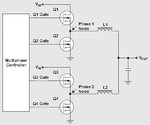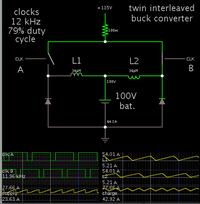Rajnaveen
Member level 2

- Joined
- May 11, 2014
- Messages
- 42
- Helped
- 0
- Reputation
- 0
- Reaction score
- 0
- Trophy points
- 6
- Activity points
- 307
hi friends
I am designing a 5KW buck converter for battery charging from solar . will you pease help me in design .
how to select the core .? and i want it to operate in DCM is it better .how much inductence is sufficient .
I am designing a 5KW buck converter for battery charging from solar . will you pease help me in design .
how to select the core .? and i want it to operate in DCM is it better .how much inductence is sufficient .




